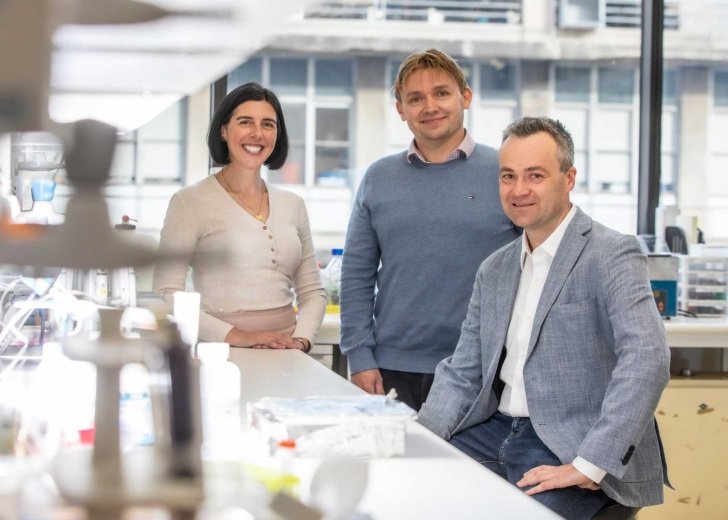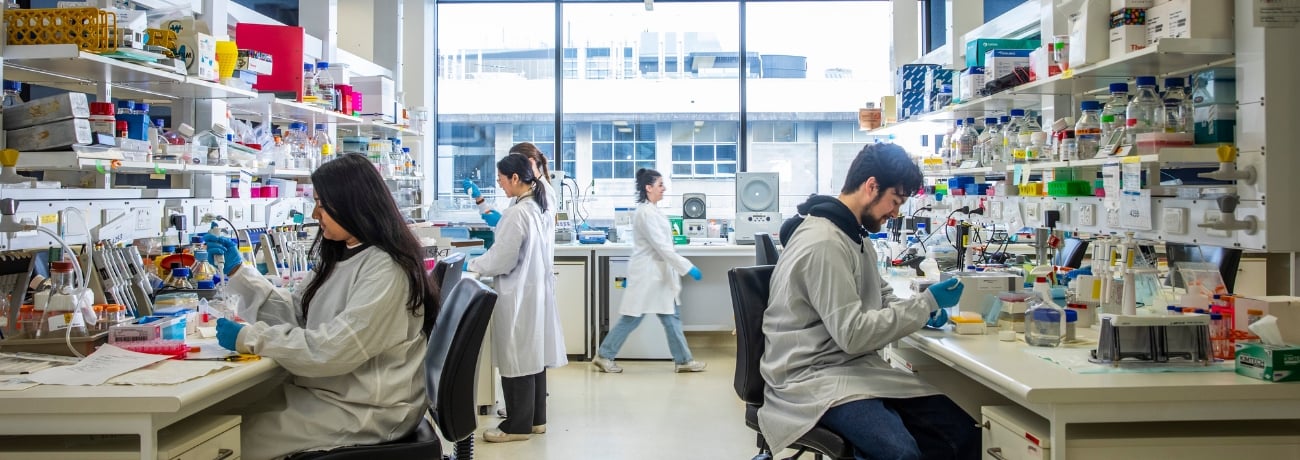Three leading scientists from The Florey are teaming up to tackle a harmful protein that builds up in patients with brain diseases.
The protein, known as TDP-43, accumulates in the central nervous system across a spectrum of neurodegenerative diseases including motor neurone disease (MND), frontotemporal dementia, Alzheimer’s disease, Parkinson’s disease, Huntington’s disease and chronic traumatic encephalopathy (CTE).
Removing TDP-43 shows promise for treating these diseases, but because the protein is located within brain cells, it is very hard for medications to reach.
The Florey’s $100K Challenge
Now, The Florey has awarded funding under the Institute’s own ‘$100K Challenge’ to three leading scientists to work on developing a powerful immunotherapy approach that, if successful, will for the first time send antibody genes across the barriers in the central nervous system into patient neurons where they will target and suppress the protein.
The transdisciplinary team bridges nanomedicine, gene therapy, drug discovery, stem cells and preclinical model research.

Dr Rebecca Nisbet is at the forefront of developing antibody therapeutics for neurodegeneration using intrabody technology. Intrabodies are antibodies that can target proteins within a cell, something other antibodies are incapable of doing.
Associate Professor Daniel Scott provides unique expertise in nanobody discovery. Nanobodies are tiny antibodies.
Professor Brad Turner’s expertise lies in taking cells from patients with neurodegenerative conditions and creating ‘pluripotent’ stem cells for research purposes. Pluripotent stem cells can be instructed to become any kind of cell.
Professor Turner said the project will combine engineered intracellular antibodies, called intrabodies, that exist inside cells, with gene therapy to deliver the intrabodies to the neurons.
“TDP-43 is the pivotal culprit protein in an expanding spectrum of neurodegenerative diseases,” Professor Turner said.
“We aim to identify a TDP-43 specific nanobody that we will then investigate for use in treatments for the many diseases linked to this protein, such as Alzheimer’s disease, Parkinson’s disease, Huntington’s disease and MND.”
Director of The Florey, Professor Trevor Kilpatrick, thanked all who entered the $100K challenge and congratulated the winning entry.
“This challenge encourages Florey researchers to pursue ideas that are bold, creative and multidisciplinary,” Professor Kilpatrick said.
“The best researchers are renowned for being intensely focused on their scientific endeavours. The $100K challenge is an innovative way of encouraging our scientists to look up from their work and collaborate with their colleagues from other disciplines on projects that spark new ideas and result in benefits that improve the lives of individuals and families affected by brain diseases.”
